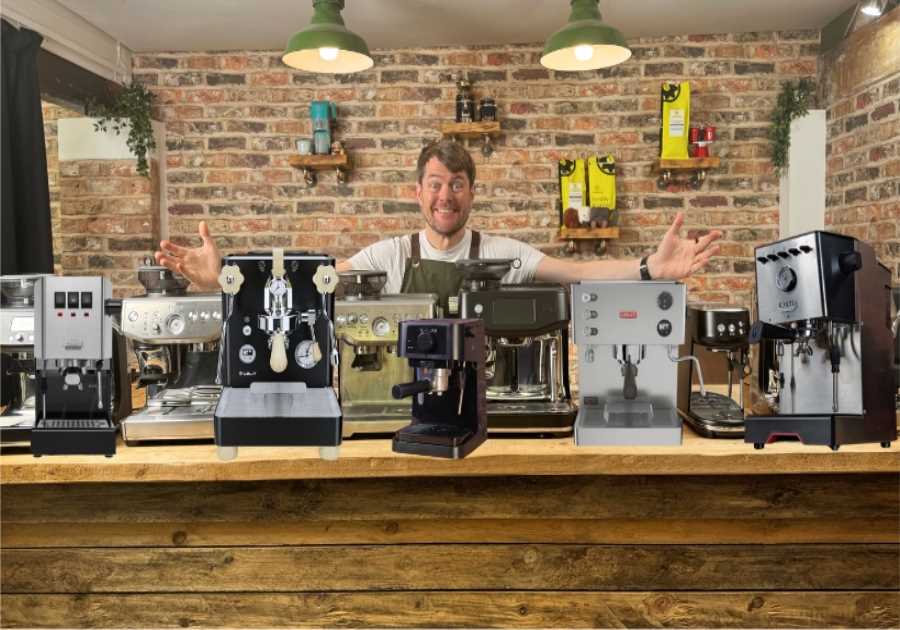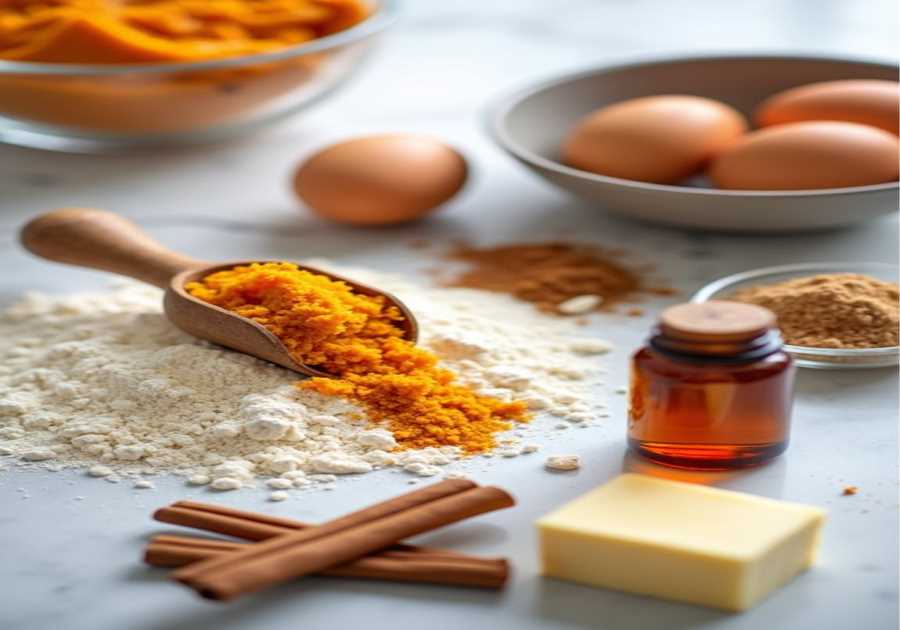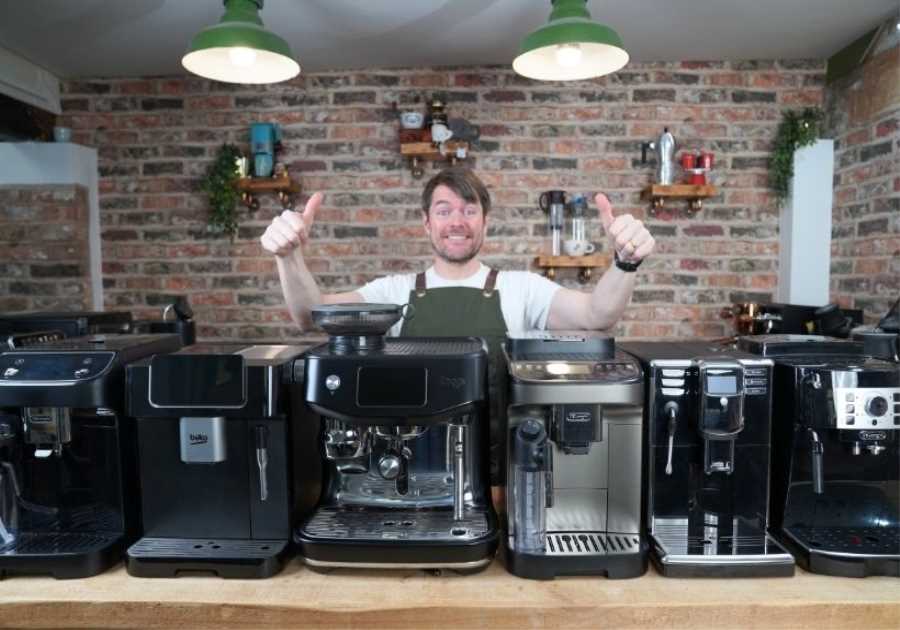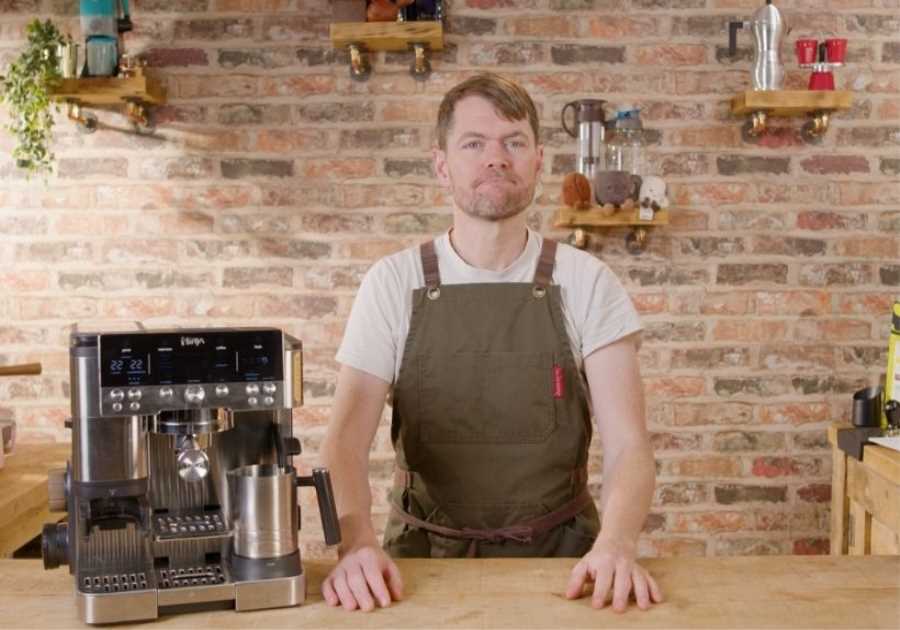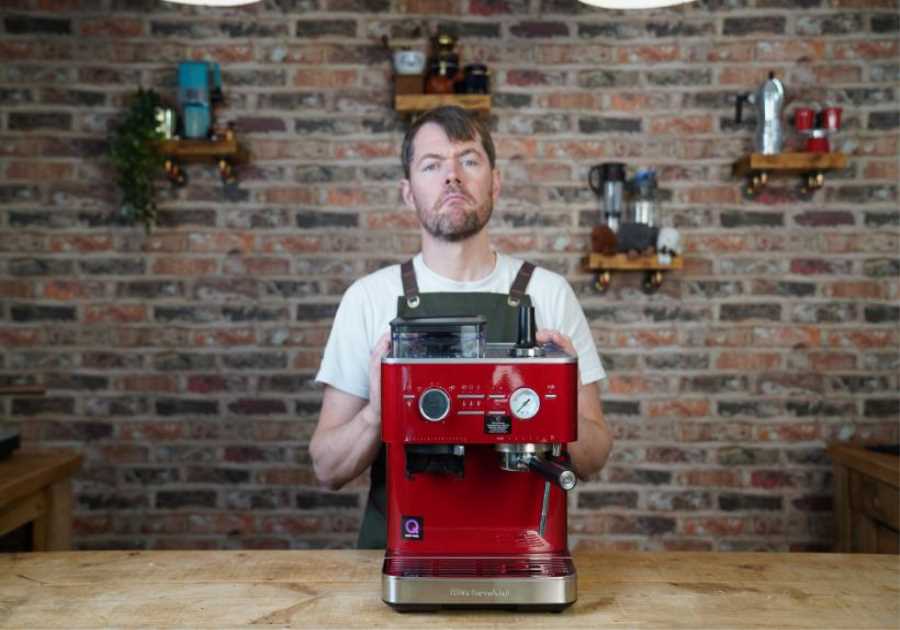Typically, when we talk about espresso equipment, we imagine a machine with groupheads, a steam wand, and a built-in boiler, whether it’s semi-automatic or fully automatic.
However, in recent years, we’ve seen the resurgence of “simpler” alternatives: manual espresso machines which use pressure generated from the user pushing down on the brew chamber to extract coffee.
But with the growth of these brands, it raises some questions: how do they work? How is extraction different? And how can you get the best out of your manual espresso machine?
To learn more, I spoke to team members at Aram Soulcraft and Flair Espresso. Read on to find out what they told me.
You might also like our article on cold-pressed espresso.

Espresso as we know it
Before getting into the topic of manual extraction, it is worth recapping how we define espresso. It first emerged at the turn of the 20th century in Italy, and has remained popular over the 120 years that have followed in Europe and further afield.
The classic definition, ascribed by the now-defunct Specialty Coffee Association of America, is as follows:
“Espresso is a 25-35 ml (x2 for double) beverage prepared from 7-9g [of coffee] (14-18g for a double) through which clean water of 90.5ºC to 96.1ºC has been forced at 9-10 atmospheres of pressure, and where the grind of the coffee is such that the brew time is 20–30 seconds.
“While brewing, the flow of espresso will appear to have the viscosity of warm honey and the resulting beverage will exhibit a thick, dark golden crema. Espresso should be prepared specifically for and immediately served to its intended consumer.”
This traditional definition is still a reference point for many baristas. However, as the coffee sector has evolved over the years, these rules have come to no longer be absolute among coffee professionals.
Surveys among groups of baristas have shown that many have adopted new parameters (or feel flexible about the old ones) when preparing espresso.
Some no longer use single and double references, for instance. Instead, their usual dose of ground coffee is between 18g and 20g. Others, meanwhile, use tools like pressure profiling and pre-infusion when pulling shots.
Andrew Pernicano is Head of Education and Community at Flair Espresso. He agrees that things have changed.
“I don’t like to talk about singles, doubles, and ounces anymore, because most people just use ratios,” he explains. “Ultimately, if you can’t brew at accepted pressures, it’s not espresso.”
Even with these changes, however, the characteristics of espresso have not evolved.
When done right, espresso should be a full-bodied and concentrated beverage, with crema. Irrespective of roast profile, the mouthfeel should be velvety, and the flavour should be bold and intense.
Ultimately, the perfect espresso results from the combination of quality coffee and excellent extraction. The latter results from a good balance between a quality method and using the right equipment.
Espresso machines were designed to achieve this goal, but new tools have changed this scenario. So where do manual machines come in?

The manual espresso market
Different hand-operated espresso gadgets began to emerge in the mid-2010s. Initially, they were priced between US $50 and US $200 – providing a more affordable entry point than many home barista espresso machine models.
Furthermore, they didn’t depend on electric power, nor did they require mains water.
Priscila Pinho, Head of International Sales for Aram Soulcraft, explains that the main motivation for developing their coffee maker was “offering the practicality of taking the machine wherever you want”.
However, customer preferences can be surprising.
“We’ve done a bunch of market research on this, and I think more than 90% of our customers use their machines at home, so they are definitely for home brewers,” she says.
Jeffrey Walcott is the Head of Marketing for Flair. He tells me that in his mind, manual machines are often an accessible entry point for people interested in brewing espresso at home.
Both of them, however, note that manual machines aren’t for complete beginners.
“[Our machines] are available for everyone to enjoy, but those who will really like this experience are the ones who want to go deep into it,” Priscila says.
This is because experimenting with espresso and learning how to dial in requires curiosity, patience, and persistence in equal parts.
Jeffrey agrees: “If someone says that espresso isn’t ‘for them’, then they are not our customer.”
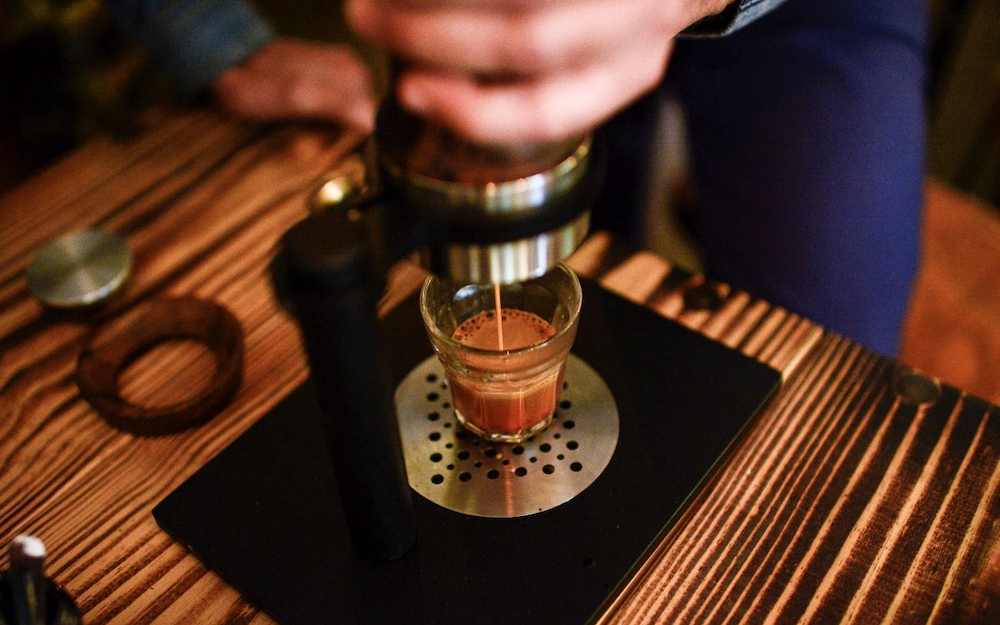
How does manual extraction work?
While manual espresso machines look different to their semi-auto and fully-auto counterparts, on the inside, they rely on the same principles: high pressure, hot water, the right brew ratio, and a fine grind.
With manual espresso machines, there are different types of mechanism that can be used to extract the coffee. While some require the user to push a plunger to force water through the coffee, others use a lever – something which isn’t new to the coffee industry.
Priscila explains that people have used a lever to pull espresso shots since the late 19th century. With direct lever equipment, baristas traditionally pulled a lever downward to force water through the coffee.
Modern machines sometimes feature variations on this classic design. For example, some lever machines use a spring piston, which allows it to slowly ease the pressure as the lever is released. This also makes it possible for the user to apply force on the upward return of the lever to further control extraction.
Using the spring piston can affect the length of pre-infusion, the amount of water that runs through the coffee, and the total extraction time.
Finally, in some cases (such as with Aram’s machines) extraction is powered by rotating a crank by hand to force water through the coffee puck.
Priscila tells me that she thinks manual extraction provides a greater understanding of the relationship between pressure and the final cup profile.
“You can understand in your own hand how pressure works,” she says. “You realise that you are the one making the espresso, not the machine.”
She adds that it’s all about getting your head around pressure and how it affects the outcome.
“When you use your hand to pull the shot, the pressure can vary in a way that accentuates incredible things in the espresso,” she says.

Getting the best out of your manual espresso machine
For starters, keep in mind that how you handle the pressure mechanism will change preinfusion. An experienced user will be able to combine this with other variables to reduce channelling and enhance flavour.
Similarly, thanks to the direct control over pressure, you can also employ something called “pressure profiling” as you extract: the practice of varying pressure throughout the shot.
Andrew explains that this allows the operator to better manage how the shot itself extracts.
“You get immediate feedback on your espresso and how everything is timing out,” he says. “You can create an espresso the way you like.”
However, at the same time, keep in mind that using your bare hands to pull a shot can be challenging, especially when it comes to consistency. Simply put, it’s harder for us to repeat the exact physical movements every time we make coffee, in comparison with an automatic machine that works with the press of a button.
Overall, manual espresso brewing requires the user to be more mindful, and it takes more time to learn how to pull a shot. It also takes longer to heat up the system, as you have to manually pour hot water.
“It’s a Slow Food style of espresso,” Priscila says. “Each coffee will be unique. It’s difficult for you to actually have consistency by using a crank or lever, but this allows you to surprise yourself more with the results.”
As with any machine or any coffee brewing method, it’s also important that you invest in a good grinder to pull each shot.
“You cannot go without a good grinder,” adds Priscila. “Think that you’re basically using a naked portafilter, and the precision that the grinder gives you is necessary as a result.”
Keep maintenance in mind, too, but note that this is actually reasonably straightforward. Hand-operated coffee makers usually only have a handful of simple and light parts, are typically easy to dismantle and clean, and require no backflushing.
“We recommend not using soap or any other cleaning product,” Jeff says. “Just rinse it with water.”
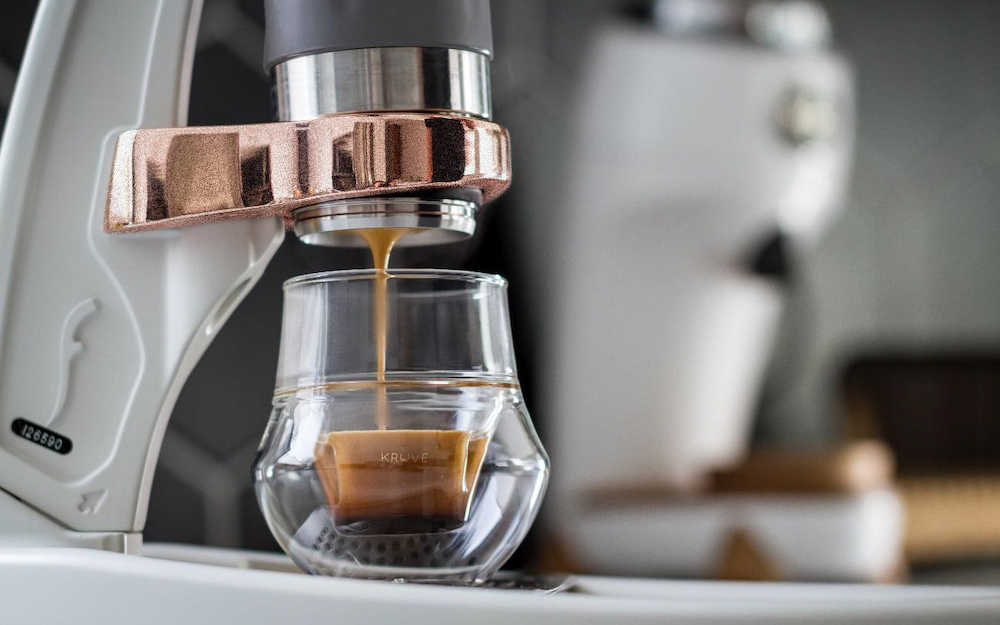
Whether for better or for worse, manual espresso machines clearly offer a different experience for the growing number of home coffee enthusiasts.
While they bring their compact size to the table alongside the chance for home baristas to deepen their skills through practice, they also offer a unique challenge. Achieving consistency is more difficult than it is with an automatic machine, and applying the right amount of pressure is certainly easier said than done.
However, altogether, manual brewing is growing in popularity across the coffee sector, and manual espresso machines seem to be no exception. Whether or not this will change in the weeks and months to come remains to be seen.
Enjoyed this? Then check out our article exploring the history of manual brewing methods.
Photo credits: Ana Paula Rosas, Aram Espresso Maker, Flair Espresso
Perfect Daily Grind
Want to read more articles like this? Sign up for our newsletter!
The post Exploring the evolution of manual espresso machines appeared first on Perfect Daily Grind.
By: Ana Paula RosasTitle: Exploring the evolution of manual espresso machines
Sourced From: perfectdailygrind.com/2022/04/the-evolution-of-manual-espresso/
Published Date: Wed, 20 Apr 2022 05:24:00 +0000

